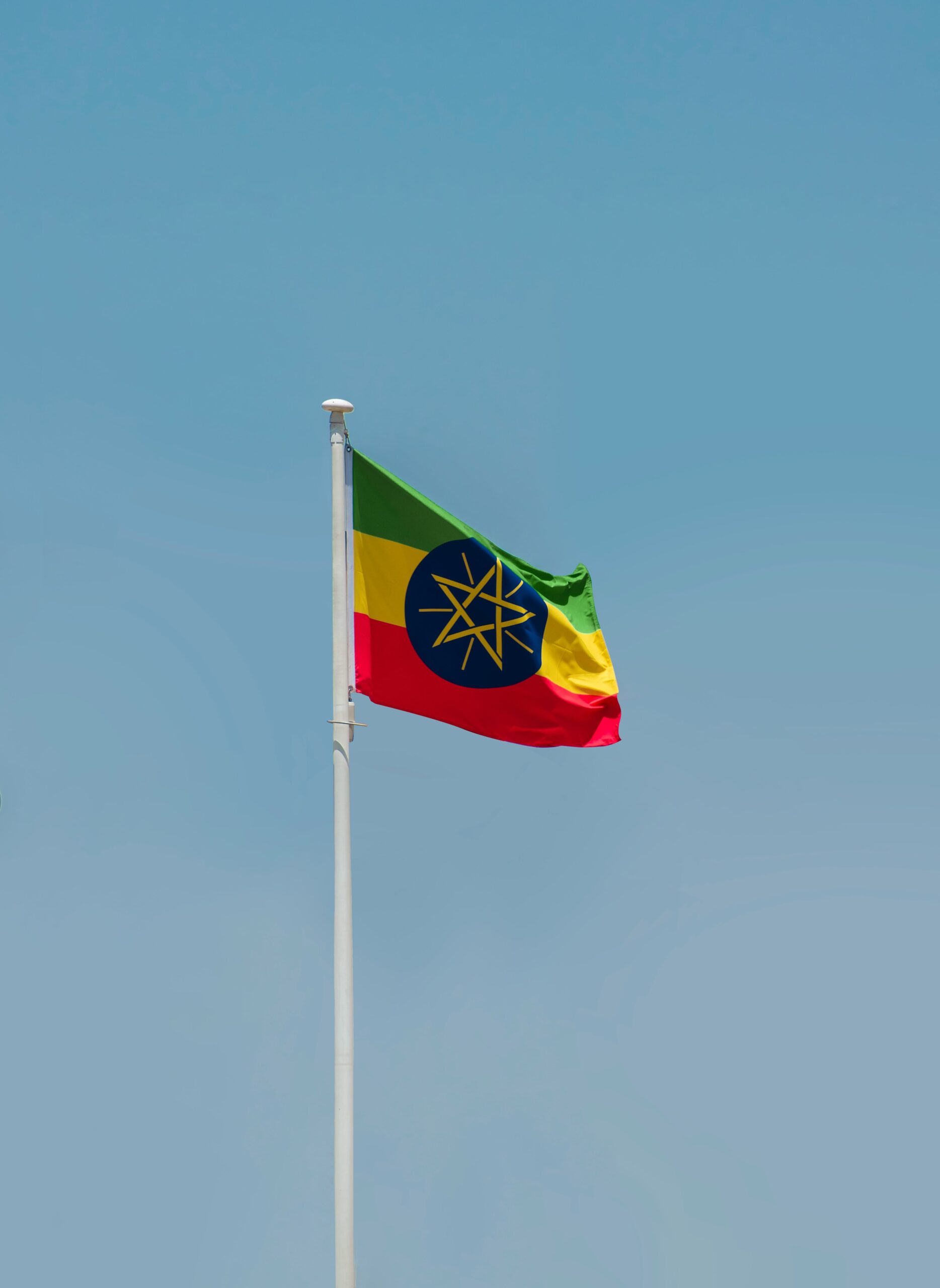Gambela National Park Ethiopia
Biodiversity and Ecosystems in Gambela National Park, Ethiopia
Gambela National Park, located in the western lowlands of Ethiopia, is a biodiversity hotspot boasting a diverse range of ecosystems and wildlife. The park covers an area of approximately 5,061 square kilometers, making it the largest national park in the country. It is characterized by vast grasslands, savannahs, and extensive wetlands created by the Baro River, which flows through the park, providing crucial water sources for the flora and fauna.
The park is home to a wide variety of wildlife, including elephants, buffalos, giraffes, zebras, lions, leopards, and numerous species of antelopes. The birdlife in Gambela National Park is particularly rich, with over 400 species recorded, such as the iconic Abyssinian ground hornbill, the endemic long-tailed nightjar, and the striking black-winged lovebird. These diverse ecosystems support an array of plant species, including acacia trees, grass species, and aquatic plants thriving in the wetlands.
Gambela National Park plays a vital role in the conservation of endangered species, such as the elephants and the Nile lechwe antelope, which are endemic to the region. The park’s ecosystems are intricately connected, with each species playing a crucial role in maintaining the balance of the ecosystem. The wetlands, in particular, are essential breeding grounds for various bird species and aquatic life, contributing to the overall biodiversity of the park.
Efforts to preserve the biodiversity and ecosystems of Gambela National Park are ongoing, with initiatives focused on anti-poaching measures, habitat restoration, and community-based conservation programs. However, the park faces challenges such as encroachment, illegal logging, and poaching, posing threats to the fragile ecosystem and wildlife populations. Sustainable management practices and increased awareness are essential to ensure the long-term protection of this valuable natural heritage.
Gambela National Park in Ethiopia stands as a testament to the country’s rich biodiversity and unique ecosystems. Through conservation efforts and sustainable practices, this national park continues to be a sanctuary for diverse wildlife and a hub for ecotourism, attracting visitors from around the world to experience the wonders of nature in this pristine wilderness.
Conservation Efforts and Challenges in Protecting Wildlife in Gambela National Park
Situated in Ethiopia’s western lowlands, Gambela National Park is a vital sanctuary for a diverse range of wildlife species, including elephants, buffaloes, giraffes, and various endemic birds. However, the park faces several conservation challenges, threatening the delicate balance of its ecosystems and endangering the survival of its resident wildlife. Conservation efforts in Gambela National Park are crucial to safeguarding its biodiversity and ensuring the sustainability of its ecosystems.
One of the main challenges faced by conservationists in Gambela National Park is poaching. Poachers target iconic species such as elephants and buffaloes for their tusks and horns, putting these animals at risk of extinction. Efforts to combat poaching include increased patrols by park rangers, the use of technology such as drones for surveillance, and community engagement to raise awareness about the importance of wildlife conservation.
Another significant challenge is habitat loss due to deforestation and agricultural expansion. As human populations grow and encroach upon the park’s boundaries, natural habitats are being destroyed, leading to fragmentation and degradation of wildlife habitats. Conservationists are working to address this issue through the establishment of buffer zones around the park, reforestation projects, and sustainable land use practices to minimize the impact of human activities on the park’s ecosystems.
Climate change is also a pressing concern for wildlife conservation in Gambela National Park. Rising temperatures, erratic rainfall patterns, and increased frequency of extreme weather events pose a threat to the park’s ecosystems and the species that depend on them for survival. Conservation efforts include monitoring and research to understand the impacts of climate change on wildlife, as well as implementing adaptation strategies to help species cope with changing environmental conditions.
In addition to these challenges, inadequate funding and limited resources are significant barriers to effective conservation in Gambela National Park. Conservation organizations and government agencies rely on funding from donors and international partners to support their efforts, but these resources are often insufficient to address all the conservation needs of the park. Mobilizing additional funding, strengthening partnerships, and engaging local communities in conservation activities are essential to overcoming these challenges and ensuring the long-term protection of Gambela National Park’s wildlife and ecosystems.
Safeguarding the rich biodiversity of Gambela National Park requires concerted conservation efforts to address poaching, habitat loss, climate change, and funding constraints. By implementing effective conservation strategies, engaging local communities, and securing adequate resources, conservationists can protect the park’s wildlife and ecosystems for future generations to enjoy and appreciate.
Unique Bird Species Found in Gambela National Park
Gambela National Park in Ethiopia is a haven for bird enthusiasts, boasting a remarkable diversity of avian species that call this pristine environment home. The park’s unique location at the confluence of the Baro River and the vast wetlands of the Gambela region makes it an ideal habitat for a wide range of bird species, both resident and migratory.
One of the most iconic bird species found in Gambela National Park is the African Fish Eagle. With its distinctive white head and neck, contrasting with a brown body and wings, the African Fish Eagle is a sight to behold as it soars through the sky, hunting for fish along the rivers and wetlands of the park. Their haunting call is a hallmark of the African wilderness and adds to the park’s rich auditory tapestry.
Another notable feathered resident of Gambela National Park is the Abyssinian Ground Hornbill. This large, striking bird with black plumage and a vivid red throat pouch is often seen stalking through the grasslands in search of insects, small mammals, and reptiles. The Abyssinian Ground Hornbill plays a crucial role in the park’s ecosystem as a top predator, helping maintain a balance in the local wildlife population.
For avid birdwatchers, Gambela National Park offers the opportunity to spot the elusive Shoebill stork. This prehistoric-looking bird with a massive bill and a towering stature is a sought-after sighting in the park’s wetlands. With its slow, deliberate movements and patient hunting strategy, the Shoebill stork is a fascinating bird to observe in its natural habitat.
In addition to these flagship species, Gambela National Park is home to a myriad of other bird species, including the vibrant Northern Carmine Bee-eater, the graceful African Skimmer, and the colorful Red-throated Bee-eater. Birdwatching in the park provides visitors with a unique chance to witness the beauty and diversity of Ethiopia’s avian fauna up close.
Gambela National Park stands out as a premier destination for bird enthusiasts due to its rich avifauna and diverse habitats. The park’s conservation efforts and pristine wilderness make it a critical sanctuary for a wide range of bird species, contributing to the overall biodiversity of the region. Visitors to Gambela National Park can immerse themselves in the sights and sounds of these unique bird species, experiencing the magic of Ethiopia’s natural heritage in a truly unforgettable way.
Community Involvement and Benefits in Promoting Sustainable Tourism in Gambela National Park
Gambela National Park in Ethiopia is not only a biodiversity hotspot but also a crucial area for sustainable tourism efforts. The involvement of local communities in the conservation and management of the park plays a significant role in promoting sustainable tourism practices while ensuring the well-being of the wildlife and ecosystems within the park.
One of the key benefits of community involvement in Gambela National Park is the empowerment of local residents. By engaging communities in decision-making processes, training programs, and employment opportunities related to tourism, the park creates a sense of ownership among the locals. This, in turn, leads to greater participation in conservation efforts and a shared responsibility for protecting the park’s natural resources.
Furthermore, community involvement fosters a deeper connection between residents and the park, leading to increased awareness and appreciation for the importance of conservation. Local communities become ambassadors for the park, spreading awareness about the significance of preserving the unique biodiversity found within Gambela National Park.
In addition to social benefits, community involvement also brings economic opportunities to local residents. Sustainable tourism initiatives such as community-based ecotourism projects provide alternative sources of income for communities living near the park. By offering guided tours, cultural experiences, and handicraft sales, local residents can benefit directly from the presence of tourists, creating a sustainable economic model that incentivizes conservation efforts.
Moreover, involving local communities in sustainable tourism practices helps reduce human-wildlife conflicts by raising awareness about coexistence strategies and fostering a mutual respect between residents and wildlife. This collaborative approach not only benefits the park’s biodiversity but also ensures the safety and well-being of both the wildlife and the local communities.
The community involvement in promoting sustainable tourism in Gambela National Park is essential for the long-term success of conservation efforts. By empowering local residents, creating economic opportunities, and fostering a sense of stewardship for the park, the sustainable tourism initiatives contribute to the preservation of this valuable ecosystem for future generations to enjoy.
The Significance of Gambela National Park in Ethiopia’s Ecotourism Industry
Gambela National Park in Ethiopia holds immense significance in the country’s ecotourism industry. Situated in the Gambela region, this national park is a sanctuary for a wide variety of wildlife species, making it a prime destination for nature enthusiasts and conservationists alike. Spanning over 5,060 square kilometers, the park boasts a diverse range of ecosystems, including grasslands, savannahs, and dense forests, providing a rich habitat for numerous flora and fauna.
The park’s strategic location along the Baro River not only enhances its natural beauty but also offers unique opportunities for visitors to engage in eco-friendly activities such as bird watching, river cruises, and wildlife safaris. Gambela National Park is home to a plethora of wildlife, including elephants, giraffes, buffalo, lions, and various antelope species, making it a haven for animal lovers and adventure seekers.
Ethiopia’s ecotourism industry has been steadily growing, with Gambela National Park playing a pivotal role in attracting tourists from around the globe. The park’s conservation efforts and sustainable tourism practices have garnered international acclaim, showcasing the country’s commitment to preserving its natural heritage for future generations. By promoting responsible travel and community involvement, Gambela National Park has become a shining example of successful ecotourism initiatives in Africa.
In addition to its ecological significance, Gambela National Park also holds cultural importance for the indigenous tribes living in the surrounding areas. The park serves as a buffer zone between these communities and wildlife habitats, fostering peaceful coexistence and mutual respect between humans and animals. Local residents actively participate in conservation projects and benefit from the economic opportunities generated by tourism activities, demonstrating the positive impact of ecotourism on community development.
As Ethiopia continues to promote sustainable tourism practices, Gambela National Park stands out as a model for integrating conservation efforts with economic growth. By preserving its diverse ecosystems and supporting local communities, the park not only contributes to the country’s environmental sustainability but also offers a unique and enriching experience for visitors seeking to explore Africa’s natural wonders. With its unrivaled beauty, rich biodiversity, and cultural heritage, Gambela National Park remains a beacon of hope for the future of ecotourism in Ethiopia.
Conclusion
Gambela National Park in Ethiopia stands as a remarkable testament to the country’s rich biodiversity and lush ecosystems. Home to a diverse range of wildlife species including elephants, buffalo, lions, and countless others, this park offers a unique opportunity to experience nature in all its glory. The vast wetlands and savannah within the park provide a crucial habitat for these animals and play a key role in maintaining the region’s ecological balance.
In the face of increasing threats such as poaching and habitat loss, conservation efforts have been implemented to safeguard the wildlife residing in Gambela National Park. Despite the challenges posed by limited resources and illegal activities, dedicated conservationists and park rangers work tirelessly to protect these precious species for future generations to cherish. Their commitment ensures that the park remains a safe haven for its inhabitants to thrive and flourish.
One of the most striking features of Gambela National Park is its abundance of unique bird species. From the majestic white-winged cliff chat to the vibrant yellow-bellied sunbird, birdwatchers are treated to a spectacular display of avian diversity. The park’s status as a haven for these feathered creatures underscores its importance not only for wildlife enthusiasts but also for scientific research and conservation efforts focused on protecting these avian treasures.
Community involvement plays a pivotal role in promoting sustainable tourism within Gambela National Park. By engaging local communities in ecotourism initiatives, opportunities are created for residents to benefit from the park’s natural resources while also fostering a sense of stewardship and pride in their environment. Through responsible tourism practices and initiatives that prioritize the well-being of both people and wildlife, Gambela National Park serves as a model for how conservation and community development can go hand in hand.
Gambela National Park holds significant value in Ethiopia’s burgeoning ecotourism industry, drawing visitors from far and wide to experience its unparalleled beauty and biodiversity. As awareness of the park’s unique offerings continues to grow, so too does the opportunity to showcase Ethiopia’s natural heritage on the global stage. By preserving the park’s ecosystems and supporting sustainable tourism practices, Gambela National Park stands as a shining example of the country’s commitment to conservation and environmental stewardship.
Gambela National Park encapsulates the very essence of Ethiopia’s natural wonders and serves as a beacon of hope for the conservation of its precious wildlife. Through dedicated conservation efforts, the protection of unique bird species, community involvement, and sustainable tourism practices, this park stands as a testament to what can be achieved when nature and people come together in harmony. As we look to the future, let us continue to cherish and safeguard the remarkable beauty of Gambela National Park for generations to come.






